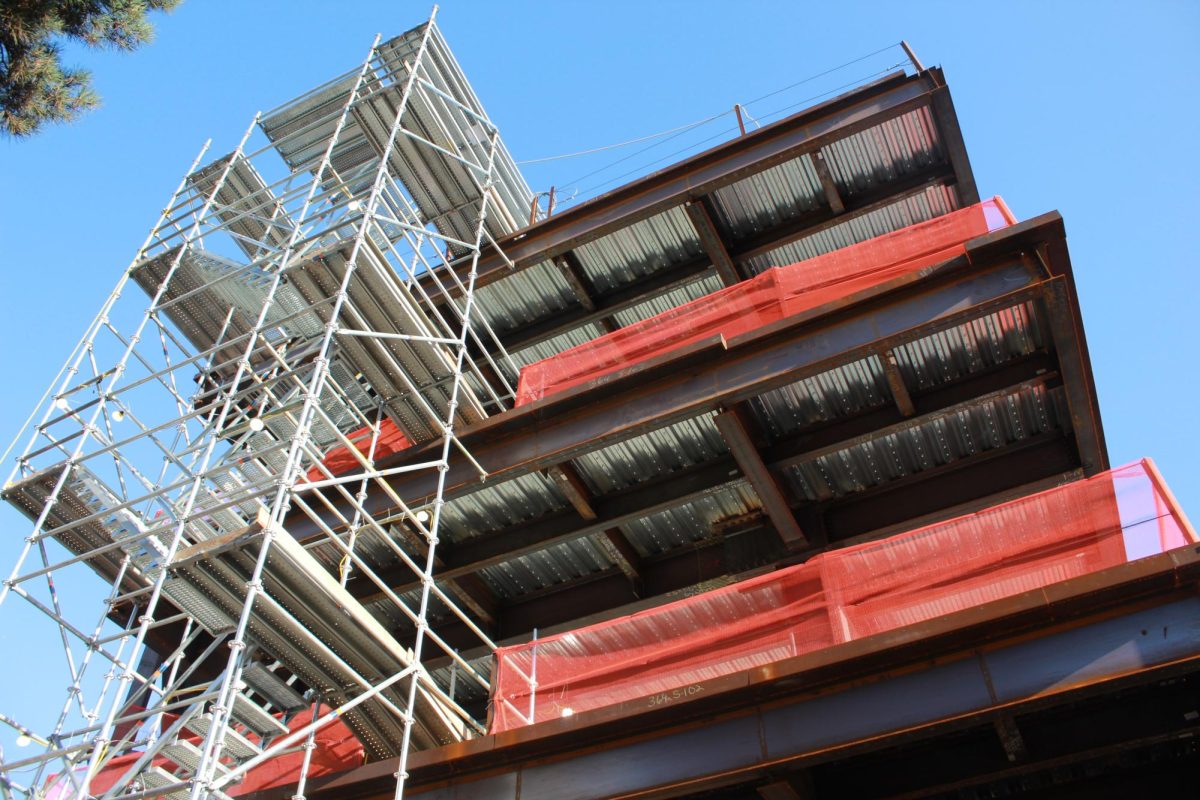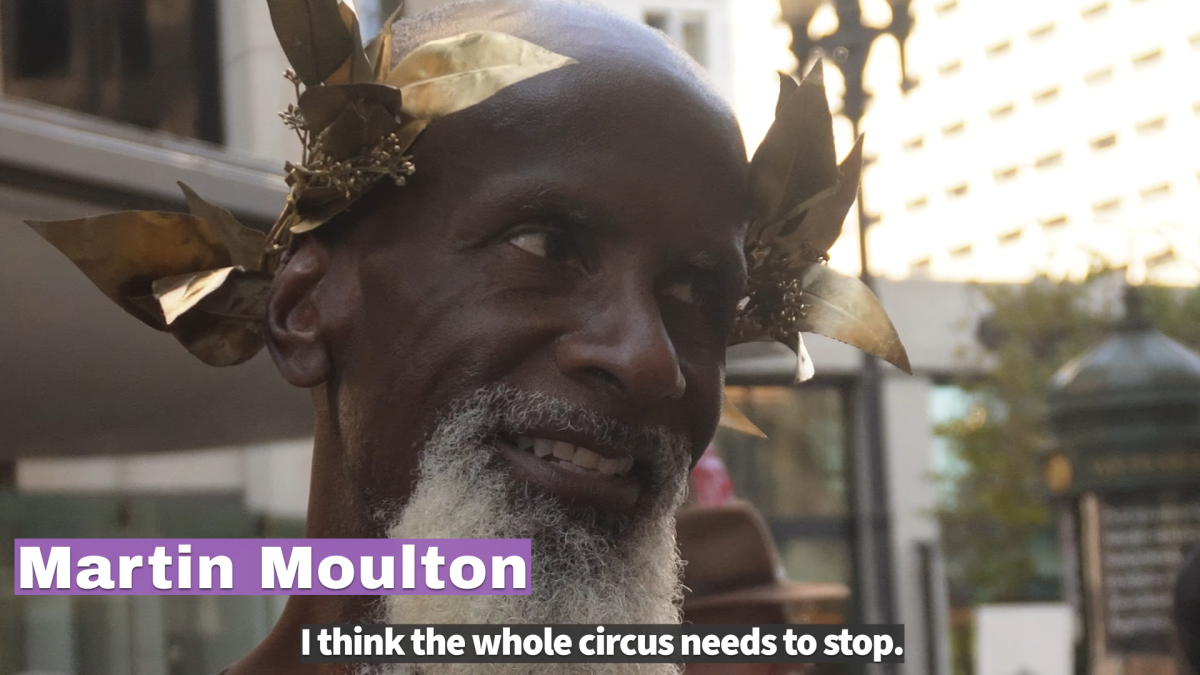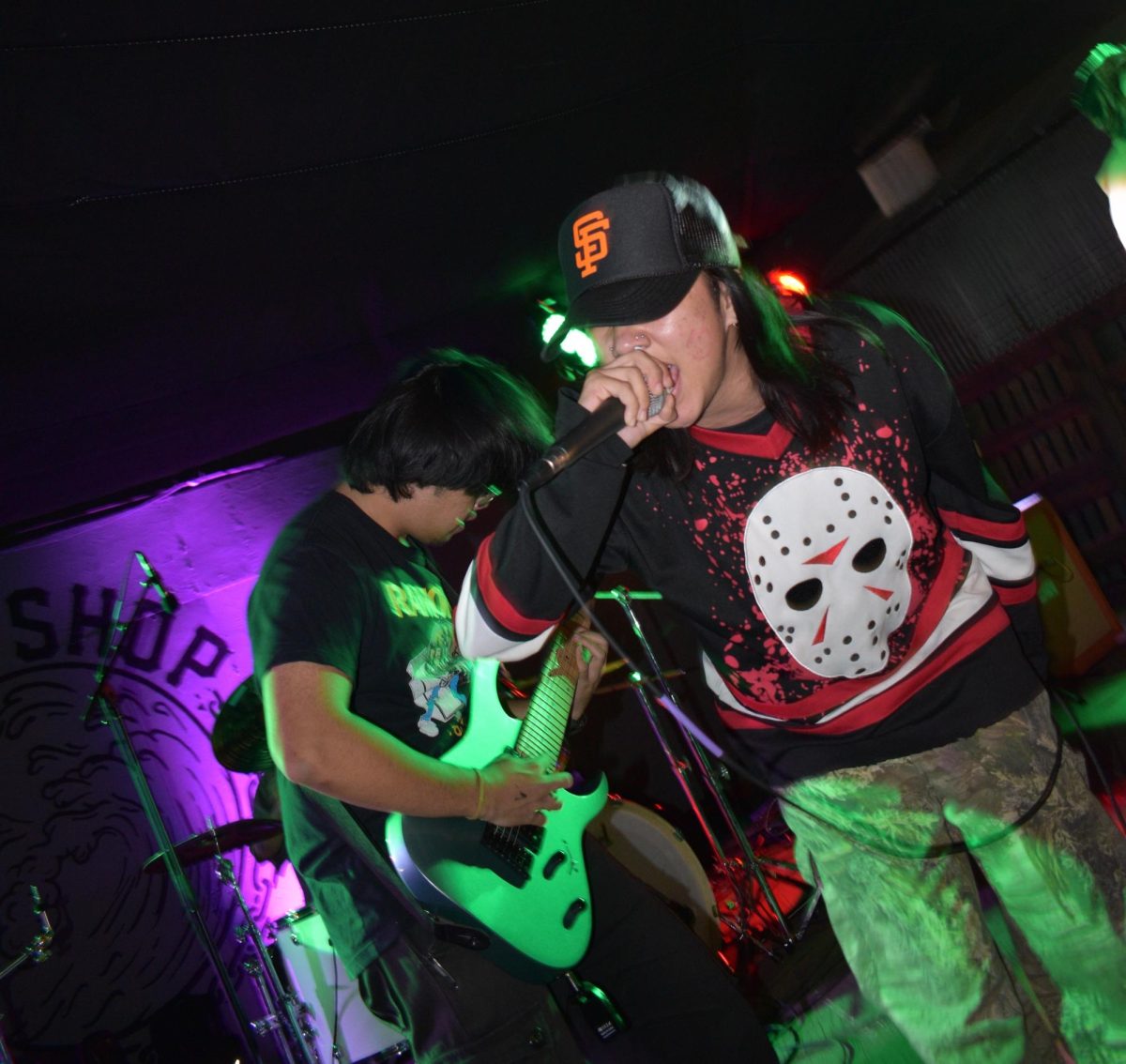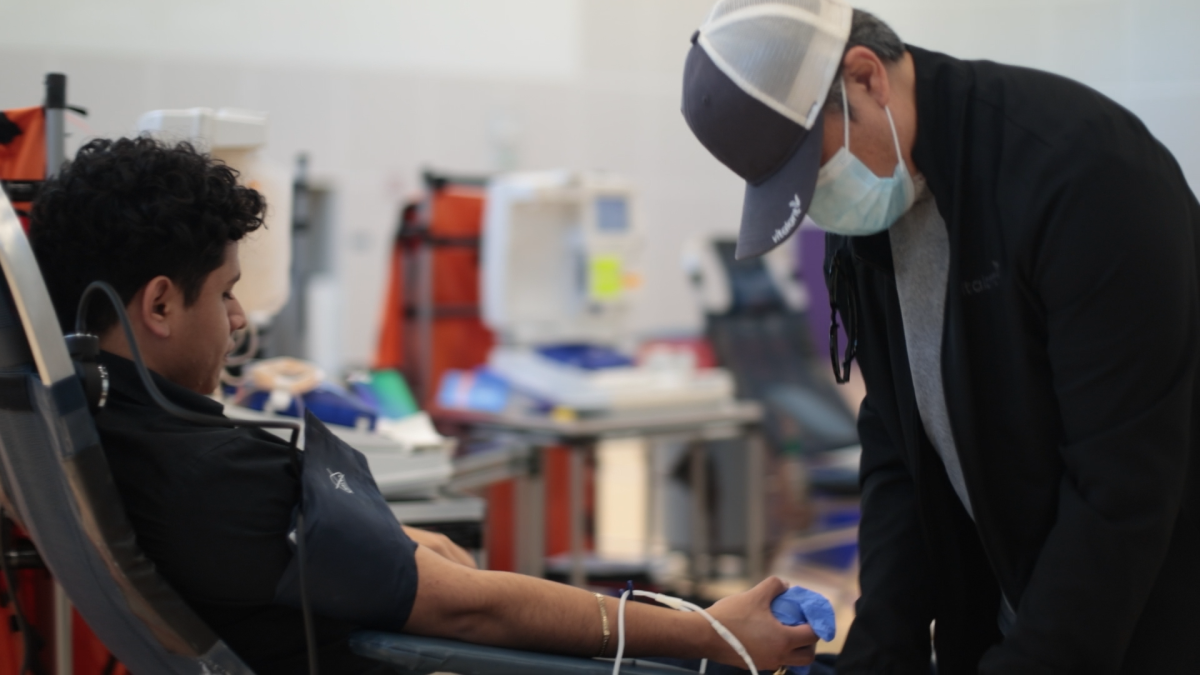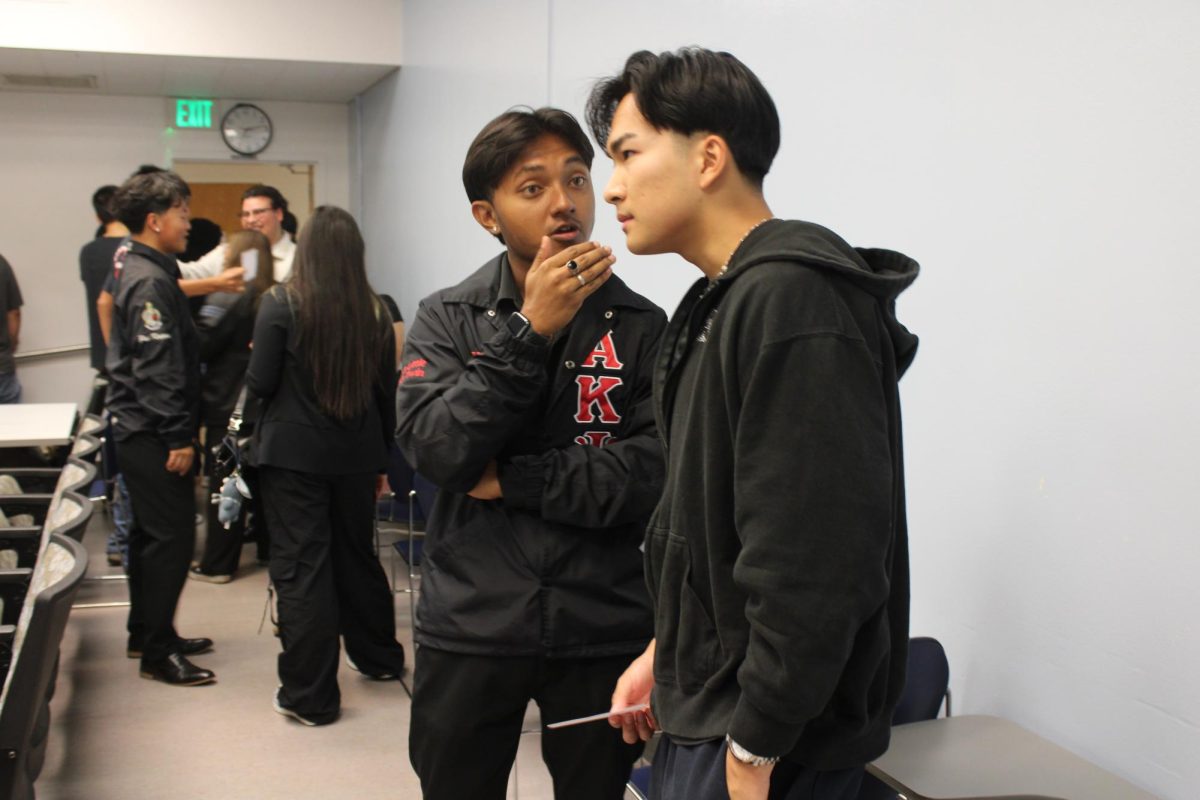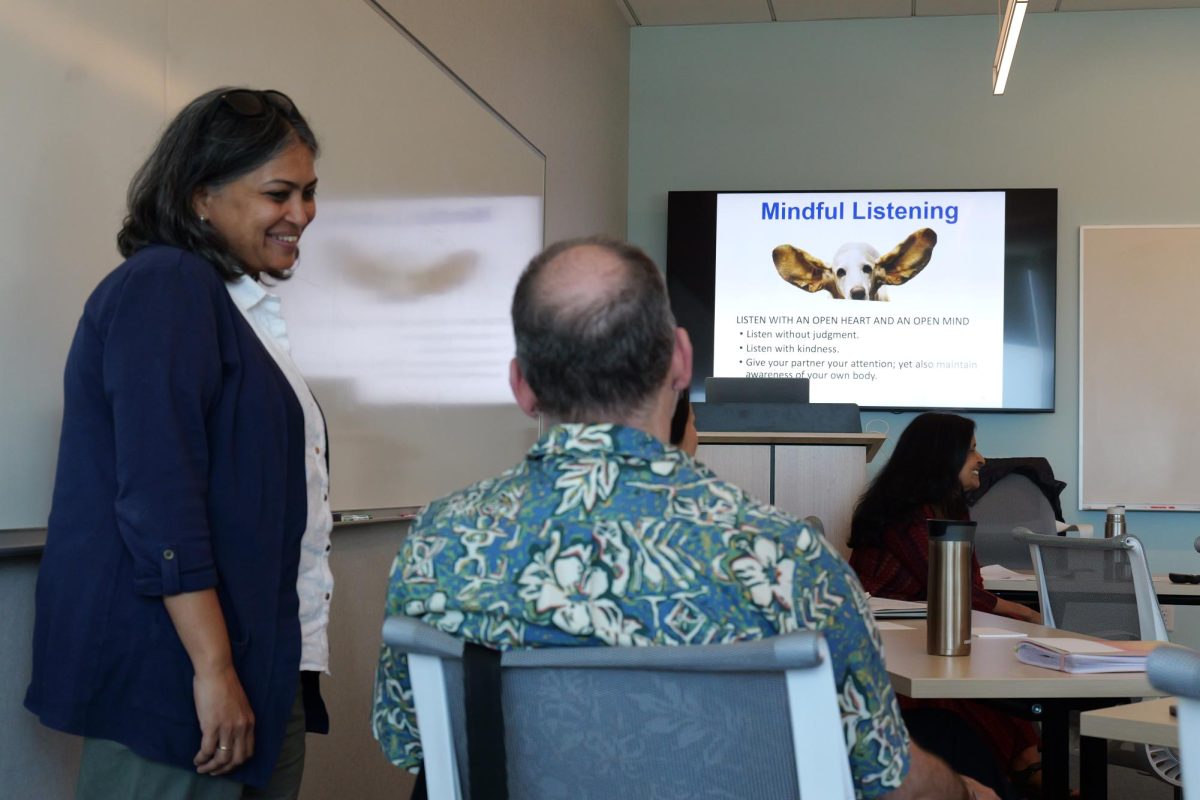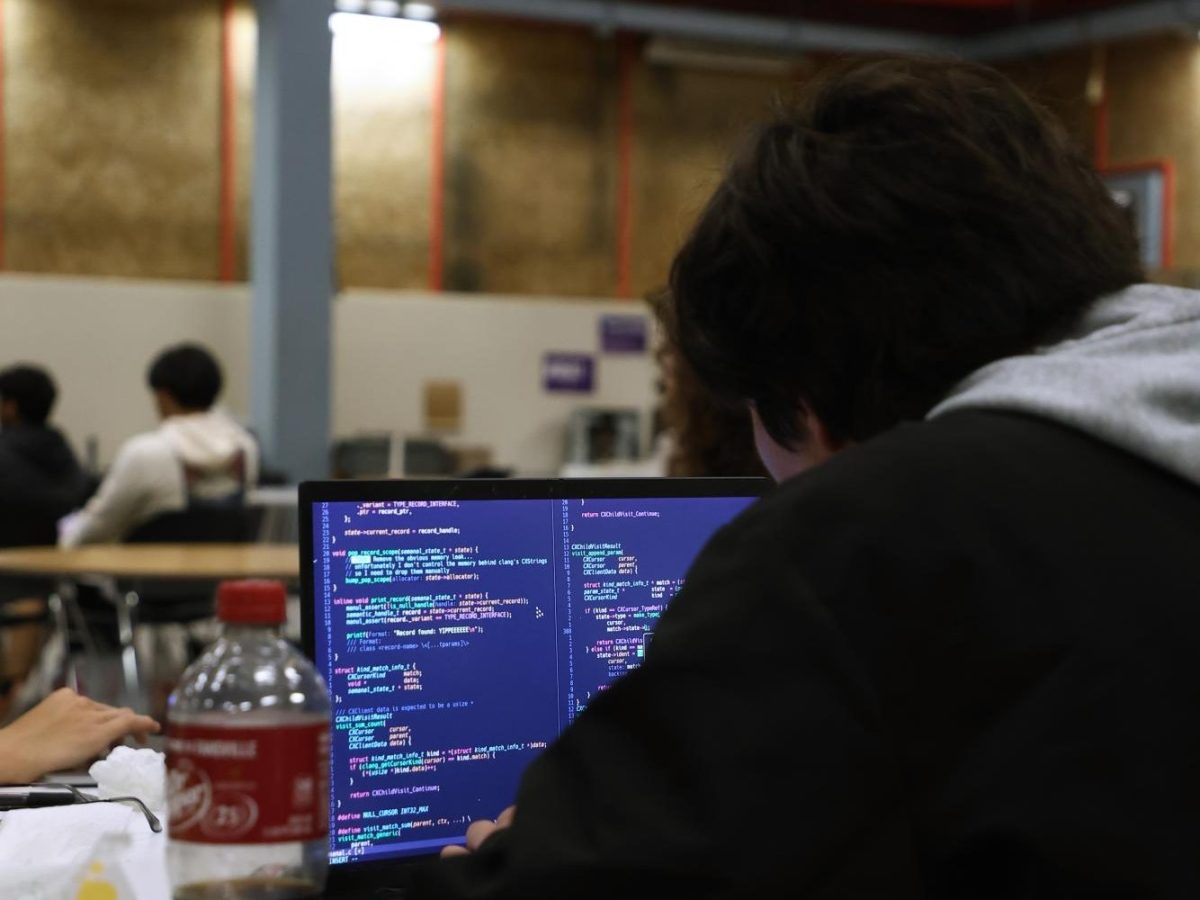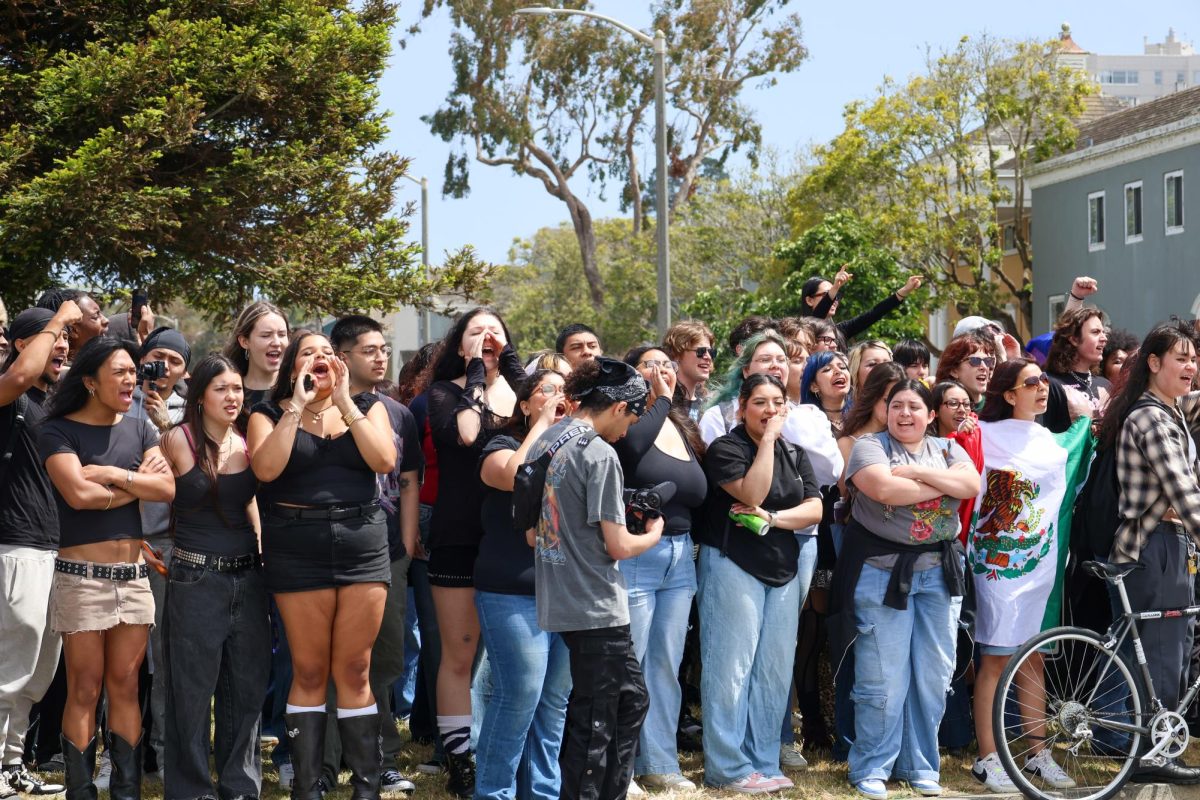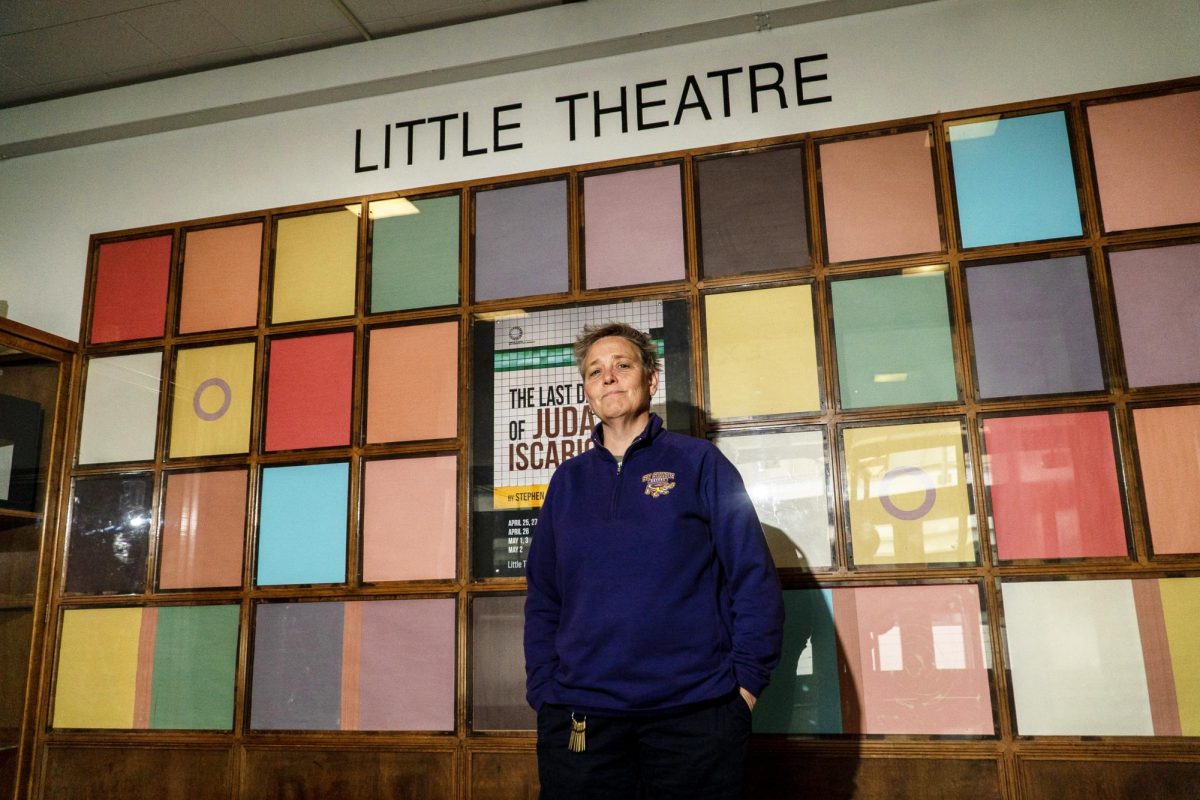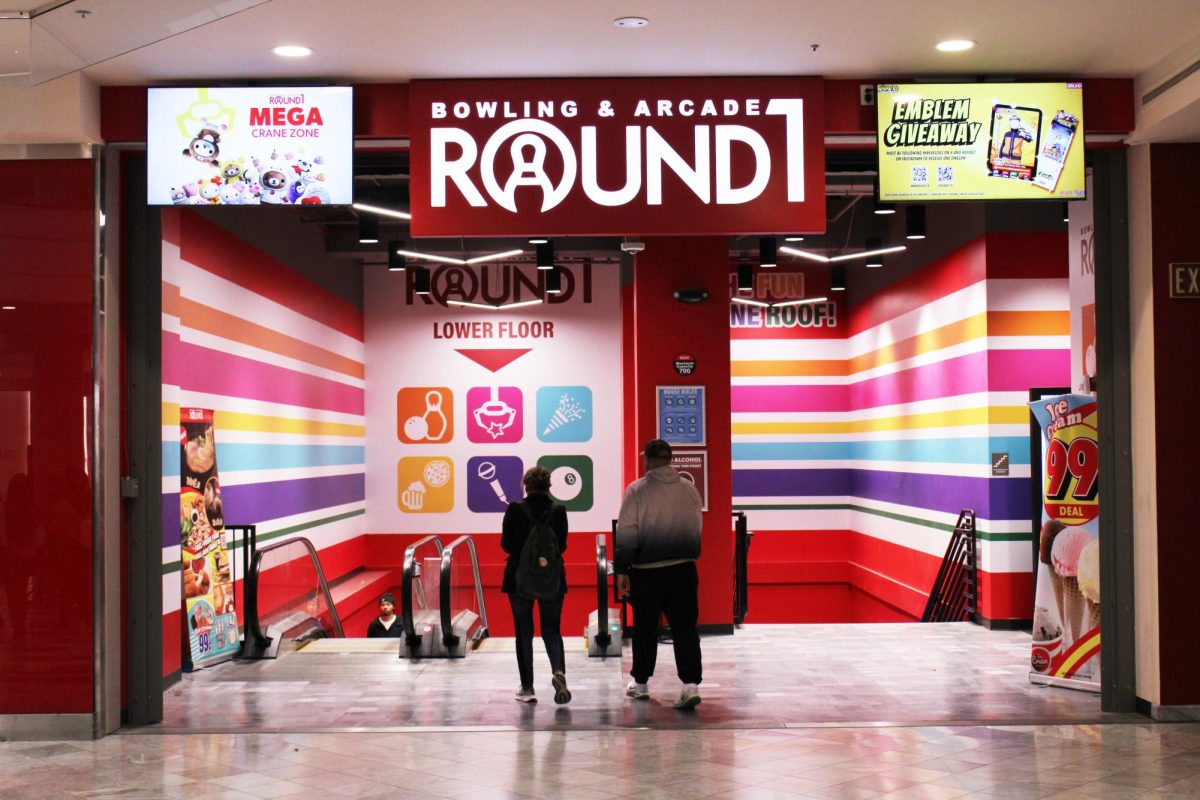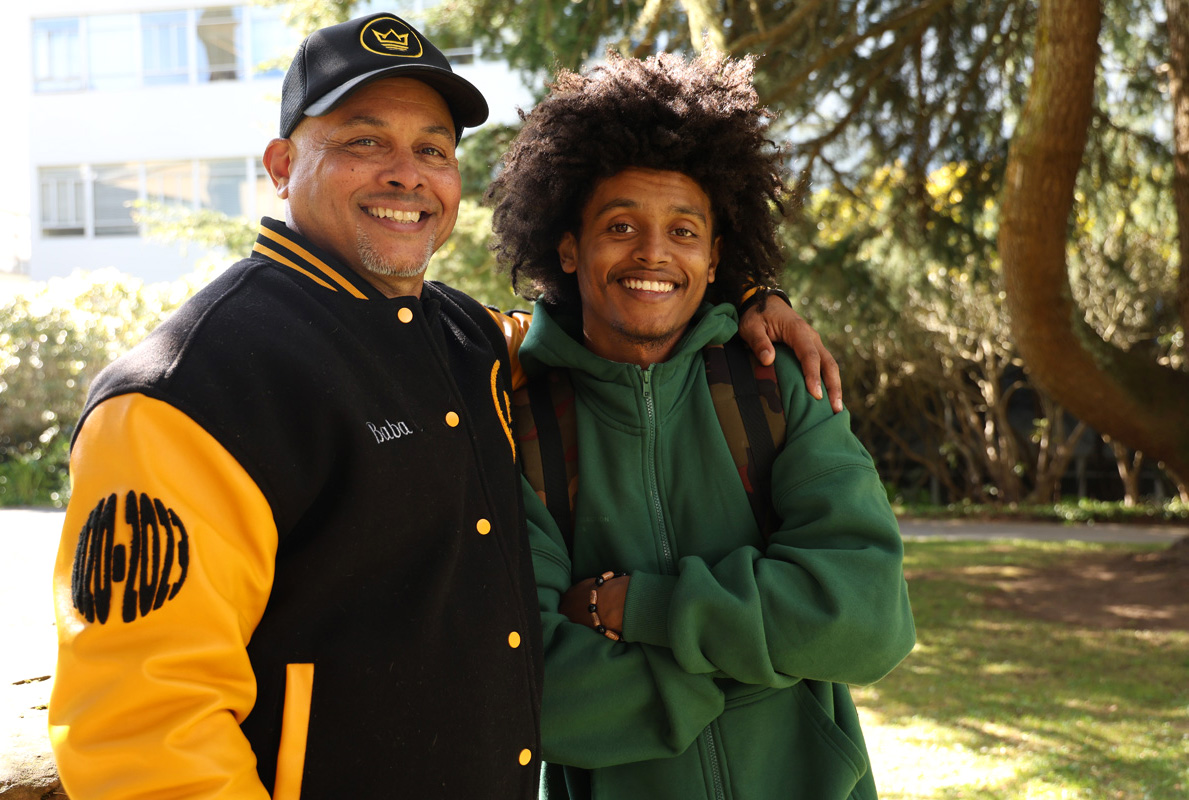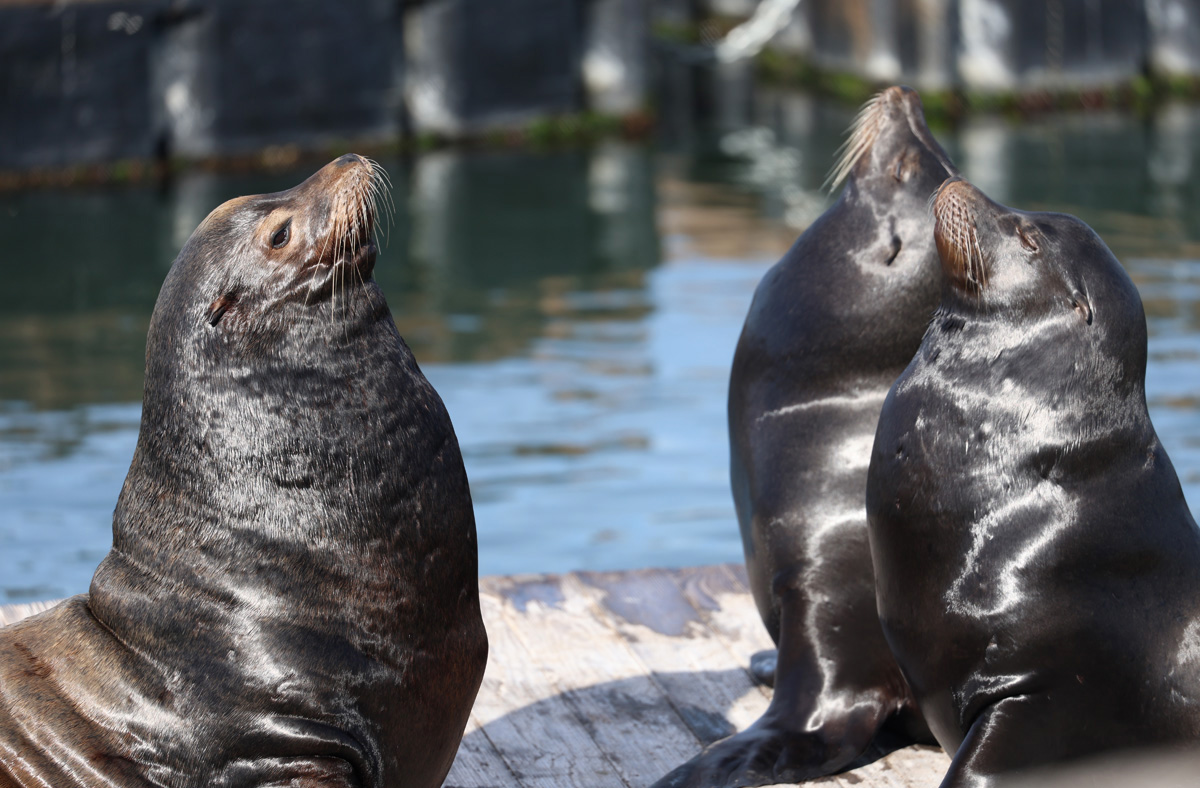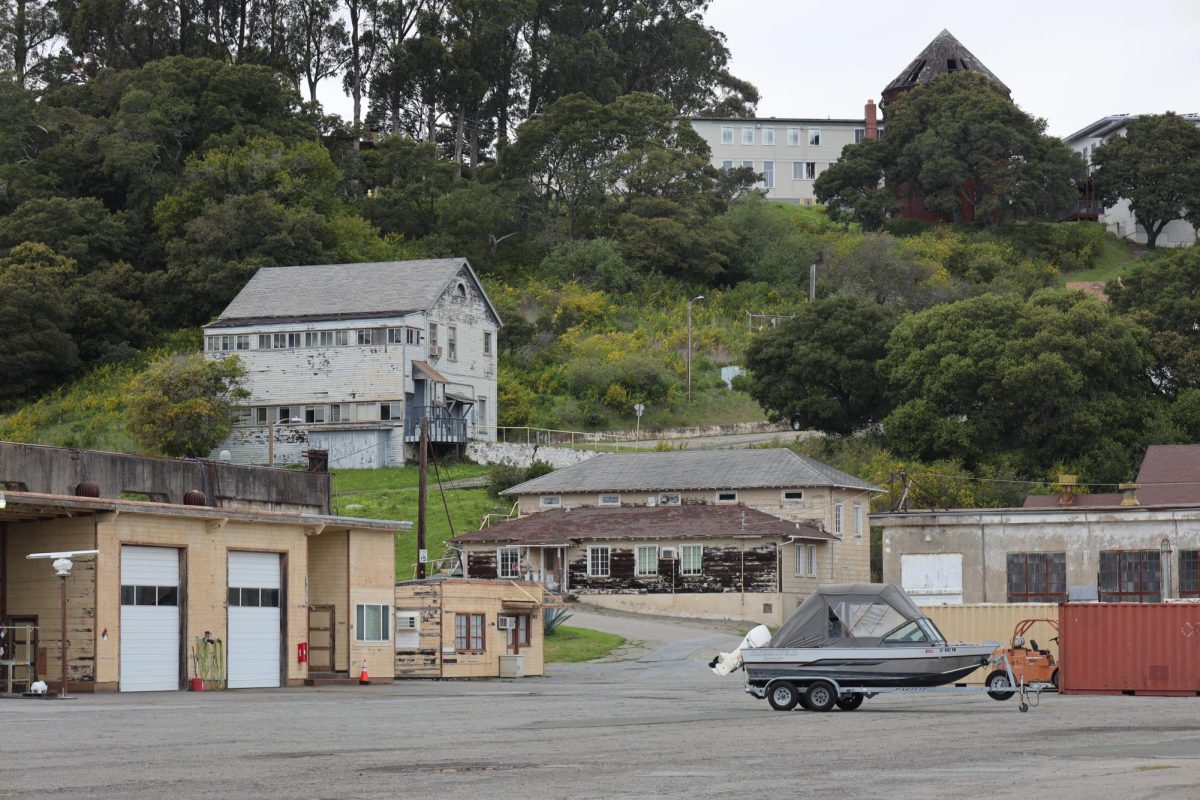In the outskirts of San Francisco, away from the bustling streets, blaring horns of traffic and towering gray skyscrapers, SF State seems like a quiet and green oasis. The campus is home to numerous florae and open spaces like the Quad, which stand out from the campus’s angular and concrete brutalist architecture. However, as the campus continues to expand its infrastructure, green spaces seem as though they are slowly disappearing.
Amaya Fender is a sophomore at SF State. She recently transferred from UC Santa Cruz in the fall of 2023 because of the smaller class sizes and lower tuition. So far, Fender loves everything about the campus, from the location to the buildings and landscapes. She loves all but one thing: the West Campus Green construction site.
Fender lives on the first floor of the Village at Centennial Square, one of the first-year housing communities on campus, and has a window that directly faces the construction site on Font Blvd. Since moving into her dorm at the beginning of last semester, Fender has encountered many challenges.
Every day at 6 a.m., when the clamor and banging of the construction begins, Fender is woken up bright and early, subjected to the blow of air horns every 30 minutes.
“I choose to not be in my room at most times because it is disruptive,” said Fender. “I go to the library or [a] coffee shop to study and get away from the sound so I can focus more.”
On top of the disruption to her studies and sleep schedule, living next to the construction site has also impacted the relationship she has with her living space.
“It doesn’t feel like my own space because I am not as present in it, and it’s not somewhere I view as relaxing,” said Fender. “The cars park right next to our windows and sometimes it feels like you lack privacy because workers are milling around in their cars. It feels like you can’t have your window open ever.”
Since SF State’s founding in 1899 and establishment at the current 144-acre campus in 1954, it has continued to expand the infrastructure and the number of buildings on campus. Subsequently, as the campus grows, the green spaces available to students diminish and the noise pollution ramps up. There has been more constructions on campus in just the past four years than in the last 20. Archival photos of the campus in its early years depict a few buildings spread wide next to lush green fields. These images contrast with today’s abundance of buildings, new construction sites and significant decline in environmental spaces.
Kenny Consedine graduated from SF State in 2023 and is the current office coordinator for the university’s Undergraduate Advising Center. Throughout his many years at State, Consedine has noticed a change in the lack of green spaces on campus.
“Over the time that I’ve been at SF State, it’s harder to find these [kinds] of smaller areas—quiet areas—as they continue to build new infrastructure on the campus,” said Consedine.
Marcus Hall and West Campus Green both sit on once-grassy fields, stripping students of two natural spaces. For many years, the campus remained untouched by new infrastructure, however, since 2019, SF State has added four buildings to the campus: Manzanita Square, Marcus Hall, the Science & Engineering Innovation Center and West Campus Green.
Construction for Marcus Hall was completed in early 2021. The building was the first academic building for the College of Liberal and Creative Arts to be built on SF State’s campus in over 25 years. The same is true about the new Science & Engineering Innovation Center. Prior to 2021, the Creative Arts building and Hensill and Thornton Halls—which had been constructed in the early 1970s—had been the most recent academic buildings for their respective colleges.
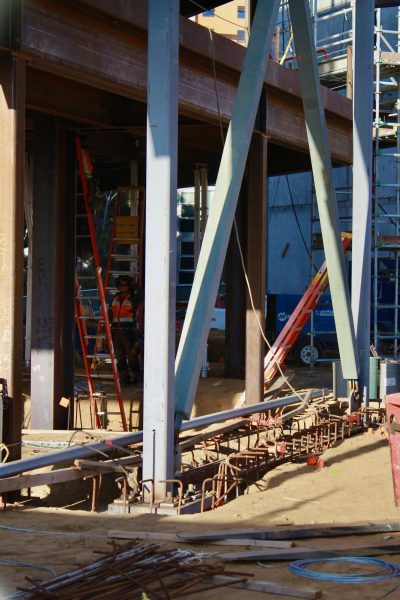
As the campus transforms before students’ eyes, they enjoy the benefits of new infrastructure at the cost of green spaces and, for some students like Fender, their peace and quiet.
Many studies have shown that access and exposure to green spaces has a significant impact on people’s mental, emotional and physical well-being. “Associations Between Nature Exposure and Health: A Review of the Evidence,” published in the International Journal of Environmental Research and Public Health, found correlations between exposure to nature and “improved cognitive function, brain activity, blood pressure, mental health, physical health and sleep.”
Similarly, another study published by the International Journal found a correlation between environmental exposure and mental health improvements. The study “Student and Nature Interactions and Their Impact on Mental Health During the COVID-19 Pandemic,” found that post-pandemic students who self-reported poor mental health also self-reported improvements in their mental well-being after spending extended periods of time outdoors.
Fender says she enjoys how quiet the campus is overall, and knows there are places to get away to if she wants to be in nature.
“If I want to get away from the bustle, there’s a place to do that on campus, [like] in the Quad,” said Fender. “There’s lots of trees and nature pretty much everywhere [in San Francisco.] We do have Golden Gate Park and Lake Merced, so I feel like if I do want to go to nature there’s places for me to go and reconnect.”
Kylie Schneider, a current graduate student, said one of the reasons she picked SF State over other universities was because of how green the campus seemed.
“The number one thing that drew me here was their soccer stadium,” said Schneider. “Just all the trees surrounding it. Also, our Quad at SF State is beautiful.”
Schneider feels that there are enough green spaces on campus but thinks there can still be more.
According to Elahe Enssani, a civil and environmental engineering professor at SF State, all buildings across California must undergo a series of checks and regulations before beginning any kind of construction. These tests include environmental reviews estimating the impact the buildings will have on the land, water and air in the area as well as economic reports that quantify the impact the new building will have on jobs and the local economy.
However, according to Enssani, there are no tests in place that look at the psychological impact buildings may have on the surrounding communities, including college campuses.
“I have not seen that […] not yet,” said Enssani. “We are concerned with the economic growth [and] inducement.”
Despite this, some scholars have begun studying the potential effects college buildings and infrastructure may have on students’ mental health. “Research on the Psychologically Restorative Effects of Campus Common Spaces From the Perspective of Health,” a study published in Front Public Health, found that activity facilities and landscape environments, including vegetative landscapes, promoted the most psychological restoration for college students.
While construction sites do not have to consider the psychological impact a building may have, they must address the environmental impact they are creating.
“Let’s say that if you are going to be […] cutting trees, then you got to mitigate that [by going] somewhere else [and] planting some trees, or doing something so it’s zero impact,” said Enssani.
Although it seems as if green spaces are slowly diminishing on campus, Enssani ensures that they are not going away anytime soon.
“Because that is what our students want, and that is actually what California wants, and [what] San Francisco wants,” said Enssani.



